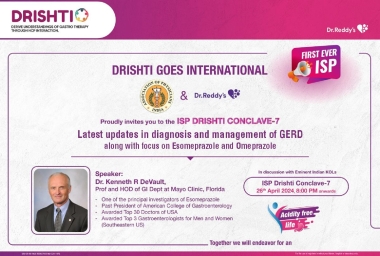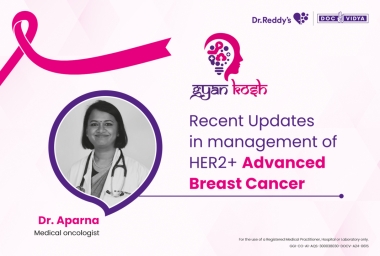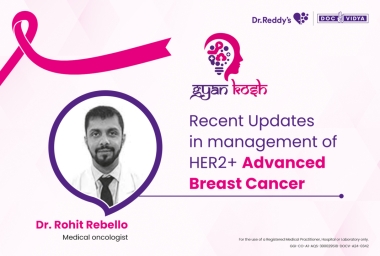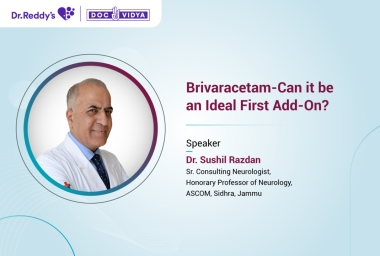CoughXpert - Symptom checker
Welcome to our symptom checker tool! In just three minutes, you can gain valuable insights into your health concerns.

Medshorts

Sustained and moderating effects of a behavioural sleep intervention for autistic children
A recent study suggests that the Sleeping Sound intervention showed sustained improvements in child sleep among autistic children. The study’s findings were published in the Journal of Autism and Developmental Disorders.
This was a randomized controlled trial which included 150 autistic children aged 5-13 years, who had sleep problems. They were randomized either to the Sleeping Sound intervention or Treatment as Usual (TAU).
At the 12-month follow-up, the caregivers of the children reported a greater reduction in sleep problems in the Sleeping Sound group when compared to the TAU group. Those children who were taking sleep medication, children with greater autism severity, and children of parents who were not experiencing psychological distress showed greater long-term benefits with the intervention. Based on the above results, it can be concluded that Sleeping Sound intervention may show sustained improvements in child sleep.

Sustained and moderating effects of a behavioural sleep intervention for autistic children
A recent study suggests that the Sleeping Sound intervention showed sustained improvements in child sleep among autistic children. The study’s findings were published in the Journal of Autism and Developmental Disorders.
This was a randomized controlled trial which included 150 autistic children aged 5-13 years, who had sleep problems. They were randomized either to the Sleeping Sound intervention or Treatment as Usual (TAU).
At the 12-month follow-up, the caregivers of the children reported a greater reduction in sleep problems in the Sleeping Sound group when compared to the TAU group. Those children who were taking sleep medication, children with greater autism severity, and children of parents who were not experiencing psychological distress showed greater long-term benefits with the intervention. Based on the above results, it can be concluded that Sleeping Sound intervention may show sustained improvements in child sleep.


Sustained and moderating effects of a behavioural sleep intervention for autistic children
A recent study suggests that the Sleeping Sound intervention showed sustained improvements in child sleep among autistic children. The study’s findings were published in the Journal of Autism and Developmental Disorders.
This was a randomized controlled trial which included 150 autistic children aged 5-13 years, who had sleep problems. They were randomized either to the Sleeping Sound intervention or Treatment as Usual (TAU).
At the 12-month follow-up, the caregivers of the children reported a greater reduction in sleep problems in the Sleeping Sound group when compared to the TAU group. Those children who were taking sleep medication, children with greater autism severity, and children of parents who were not experiencing psychological distress showed greater long-term benefits with the intervention. Based on the above results, it can be concluded that Sleeping Sound intervention may show sustained improvements in child sleep.

Effect of vitamin D3 supplementation in pregnancy on risk of autism and Attention Deficit Hyperactive Disorder
According to a recent study, maternal preintervention 25(OH)D (maternal 25-hydroxy-vitamin D) when given at a higher dose, decreased the risk of autism, decreased the risk of ADHD diagnosis, and lowered autistic symptom load. The conclusions of this study were published in the American Journal of Clinical Nutrition.
This randomized study was part of the COpenhagen Prospective Study on Neuro-PSYCHiatric Development (COPYCH) project and consisted of 700 healthy mother-child pairs who enrolled at the 24th week of pregnancy. 25(OH)D was measured at inclusion and 623 mothers underwent randomization to receive either the high-dose of 2800 IU/d (n=315) or standard dose of 400 IU/d (n=308) Vitamin D3 until one week after childbirth. At 10 years of age, diagnoses and symptom load of autism and ADHD, respectively was made utilizing the Kiddie-Schedule for Affective Disorders and Schizophrenia for School-Age Children-Present and Lifetime Version.
At the end of the study, it was seen from the psychopathologic evaluation that 591 (10-year old) children completed it. Out of this, 16 and 65 children were identified with autism and ADHD, respectively. A total of 496 children participated in the vitamin D3 trial (high-dose: 246; standard-dose: 250), out of which 12 and 58 children were identified with autism and ADHD, respectively.
Based on the above results, it can be concluded that higher levels of maternal preintervention 25(OH)D may be associated with a decreased risk of autism, lower autistic symptom load, and decreased risk of ADHD diagnosis. However, supplementation with high-dose vitamin D3 may not be associated with the risk of autism and ADHD.

Effect of vitamin D3 supplementation in pregnancy on risk of autism and Attention Deficit Hyperactive Disorder
According to a recent study, maternal preintervention 25(OH)D (maternal 25-hydroxy-vitamin D) when given at a higher dose, decreased the risk of autism, decreased the risk of ADHD diagnosis, and lowered autistic symptom load. The conclusions of this study were published in the American Journal of Clinical Nutrition.
This randomized study was part of the COpenhagen Prospective Study on Neuro-PSYCHiatric Development (COPYCH) project and consisted of 700 healthy mother-child pairs who enrolled at the 24th week of pregnancy. 25(OH)D was measured at inclusion and 623 mothers underwent randomization to receive either the high-dose of 2800 IU/d (n=315) or standard dose of 400 IU/d (n=308) Vitamin D3 until one week after childbirth. At 10 years of age, diagnoses and symptom load of autism and ADHD, respectively was made utilizing the Kiddie-Schedule for Affective Disorders and Schizophrenia for School-Age Children-Present and Lifetime Version.
At the end of the study, it was seen from the psychopathologic evaluation that 591 (10-year old) children completed it. Out of this, 16 and 65 children were identified with autism and ADHD, respectively. A total of 496 children participated in the vitamin D3 trial (high-dose: 246; standard-dose: 250), out of which 12 and 58 children were identified with autism and ADHD, respectively.
Based on the above results, it can be concluded that higher levels of maternal preintervention 25(OH)D may be associated with a decreased risk of autism, lower autistic symptom load, and decreased risk of ADHD diagnosis. However, supplementation with high-dose vitamin D3 may not be associated with the risk of autism and ADHD.


Effect of vitamin D3 supplementation in pregnancy on risk of autism and Attention Deficit Hyperactive Disorder
According to a recent study, maternal preintervention 25(OH)D (maternal 25-hydroxy-vitamin D) when given at a higher dose, decreased the risk of autism, decreased the risk of ADHD diagnosis, and lowered autistic symptom load. The conclusions of this study were published in the American Journal of Clinical Nutrition.
This randomized study was part of the COpenhagen Prospective Study on Neuro-PSYCHiatric Development (COPYCH) project and consisted of 700 healthy mother-child pairs who enrolled at the 24th week of pregnancy. 25(OH)D was measured at inclusion and 623 mothers underwent randomization to receive either the high-dose of 2800 IU/d (n=315) or standard dose of 400 IU/d (n=308) Vitamin D3 until one week after childbirth. At 10 years of age, diagnoses and symptom load of autism and ADHD, respectively was made utilizing the Kiddie-Schedule for Affective Disorders and Schizophrenia for School-Age Children-Present and Lifetime Version.
At the end of the study, it was seen from the psychopathologic evaluation that 591 (10-year old) children completed it. Out of this, 16 and 65 children were identified with autism and ADHD, respectively. A total of 496 children participated in the vitamin D3 trial (high-dose: 246; standard-dose: 250), out of which 12 and 58 children were identified with autism and ADHD, respectively.
Based on the above results, it can be concluded that higher levels of maternal preintervention 25(OH)D may be associated with a decreased risk of autism, lower autistic symptom load, and decreased risk of ADHD diagnosis. However, supplementation with high-dose vitamin D3 may not be associated with the risk of autism and ADHD.

Sugemalimab plus chemotherapy improved progression-free survival and overall survival in advanced ESCC patients
A recent study demonstrated that the utilization of sugemalimab alongside chemotherapy significantly improved progression-free survival and overall survival in treatment-naïve individuals with advanced esophageal squamous cell carcinoma (ESCC). This study’s findings were published in the journal, Nature medicine.
A total of 540 adults, ranging in age from 18 to 75 years, who were diagnosed with locally advanced, unresectable, recurrent or metastatic ESCC and had not undergone any previous systemic treatment, were enrolled in this multicenter, double-blinded, randomized, phase 3 trial. The patients were randomly assigned in a 2:1 ratio to receive either sugemalimab, an anti-PD-L1 antibody at a dose of 1,200 mg or placebo every 3 weeks for a maximum period of 24 months. Additionally, all the randomized patients underwent chemotherapy consisting of cisplatin (80 mg m-2 on day 1) and 5-fluorouracil (800 mg m-2 day-1 on days 1-4) every 3 weeks for a maximum of six cycles. The study assessed both progression-free survival and overall survival outcomes.
With a median follow-up of 15.2 months, the extension of progression-free survival showed statistical significance when comparing sugemalimab plus chemotherapy to placebo plus chemotherapy (median 6.2 months vs 5.4 months). Additionally, overall survival was better with sugemalimab plus chemotherapy when compared to placebo plus chemotherapy (median 15.3 months vs 11.5 months). There was a notably higher objective response rate (60.1% vs 45.2%) observed with sugemalimab plus chemotherapy compared to placebo plus chemotherapy.
Thus, it can be concluded that the combination of sugemalimab and chemotherapy led to a notable extension in both progression-free survival and overall survival among treatment-naïve individuals with advanced ESCC.

Sugemalimab plus chemotherapy improved progression-free survival and overall survival in advanced ESCC patients
A recent study demonstrated that the utilization of sugemalimab alongside chemotherapy significantly improved progression-free survival and overall survival in treatment-naïve individuals with advanced esophageal squamous cell carcinoma (ESCC). This study’s findings were published in the journal, Nature medicine.
A total of 540 adults, ranging in age from 18 to 75 years, who were diagnosed with locally advanced, unresectable, recurrent or metastatic ESCC and had not undergone any previous systemic treatment, were enrolled in this multicenter, double-blinded, randomized, phase 3 trial. The patients were randomly assigned in a 2:1 ratio to receive either sugemalimab, an anti-PD-L1 antibody at a dose of 1,200 mg or placebo every 3 weeks for a maximum period of 24 months. Additionally, all the randomized patients underwent chemotherapy consisting of cisplatin (80 mg m-2 on day 1) and 5-fluorouracil (800 mg m-2 day-1 on days 1-4) every 3 weeks for a maximum of six cycles. The study assessed both progression-free survival and overall survival outcomes.
With a median follow-up of 15.2 months, the extension of progression-free survival showed statistical significance when comparing sugemalimab plus chemotherapy to placebo plus chemotherapy (median 6.2 months vs 5.4 months). Additionally, overall survival was better with sugemalimab plus chemotherapy when compared to placebo plus chemotherapy (median 15.3 months vs 11.5 months). There was a notably higher objective response rate (60.1% vs 45.2%) observed with sugemalimab plus chemotherapy compared to placebo plus chemotherapy.
Thus, it can be concluded that the combination of sugemalimab and chemotherapy led to a notable extension in both progression-free survival and overall survival among treatment-naïve individuals with advanced ESCC.


Sugemalimab plus chemotherapy improved progression-free survival and overall survival in advanced ESCC patients
A recent study demonstrated that the utilization of sugemalimab alongside chemotherapy significantly improved progression-free survival and overall survival in treatment-naïve individuals with advanced esophageal squamous cell carcinoma (ESCC). This study’s findings were published in the journal, Nature medicine.
A total of 540 adults, ranging in age from 18 to 75 years, who were diagnosed with locally advanced, unresectable, recurrent or metastatic ESCC and had not undergone any previous systemic treatment, were enrolled in this multicenter, double-blinded, randomized, phase 3 trial. The patients were randomly assigned in a 2:1 ratio to receive either sugemalimab, an anti-PD-L1 antibody at a dose of 1,200 mg or placebo every 3 weeks for a maximum period of 24 months. Additionally, all the randomized patients underwent chemotherapy consisting of cisplatin (80 mg m-2 on day 1) and 5-fluorouracil (800 mg m-2 day-1 on days 1-4) every 3 weeks for a maximum of six cycles. The study assessed both progression-free survival and overall survival outcomes.
With a median follow-up of 15.2 months, the extension of progression-free survival showed statistical significance when comparing sugemalimab plus chemotherapy to placebo plus chemotherapy (median 6.2 months vs 5.4 months). Additionally, overall survival was better with sugemalimab plus chemotherapy when compared to placebo plus chemotherapy (median 15.3 months vs 11.5 months). There was a notably higher objective response rate (60.1% vs 45.2%) observed with sugemalimab plus chemotherapy compared to placebo plus chemotherapy.
Thus, it can be concluded that the combination of sugemalimab and chemotherapy led to a notable extension in both progression-free survival and overall survival among treatment-naïve individuals with advanced ESCC.
Courses
No result found. Choose another option for better results.

















